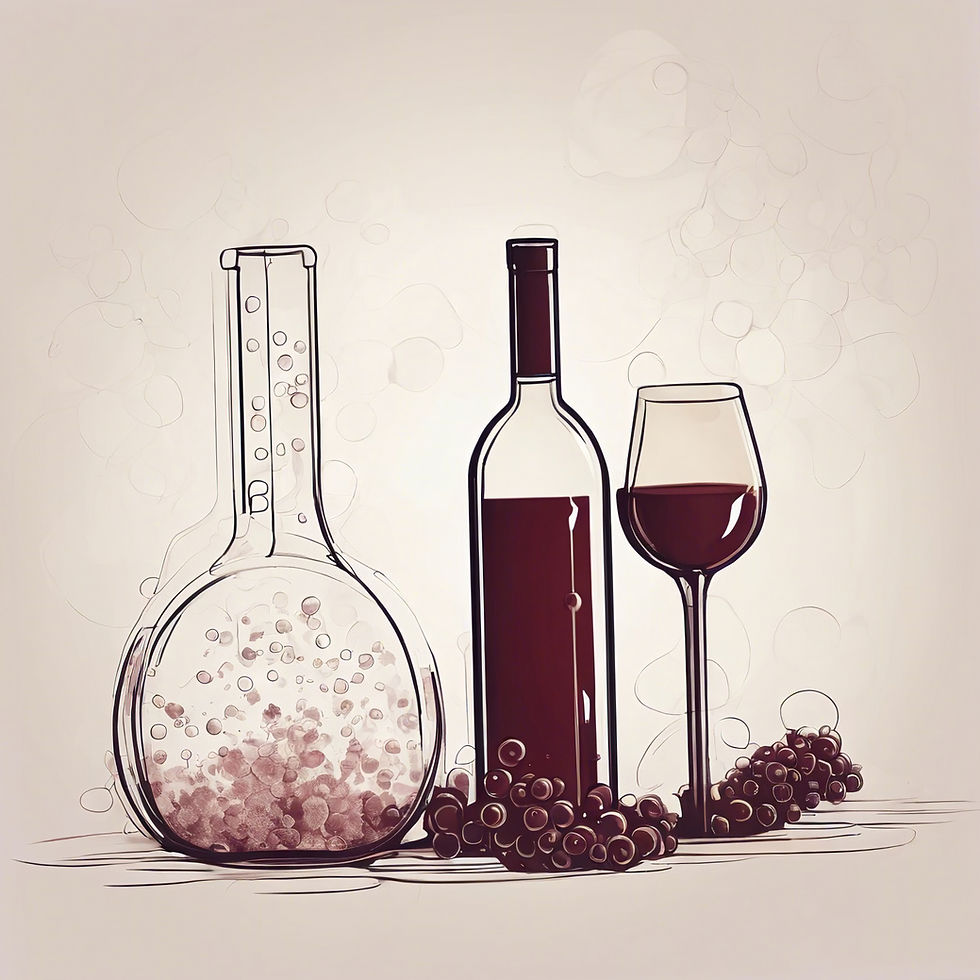
Hello, wine lovers! Darina Serova here, your go-to gal for all things vinous and vivacious. Today, I’m diving into something that might sound a bit technical but is incredibly important for anyone who cherishes a good glass of wine. We’re talking about how pesticides, specifically paclobutrazol, can affect the wine fermentation process. Trust me, this isn't just for the science geeks; it’s for anyone who wants to understand what goes into their favorite bottle of vino and why it matters.
So, let’s get into the nitty-gritty. The researchers behind this study, Zhou et al., have delved into how paclobutrazol, a pesticide commonly used in agriculture, can leave residues on grapes that ultimately make their way into our wine. Why should you care? Well, the presence of paclobutrazol can disrupt the microbial community responsible for fermentation, potentially altering the taste, quality, and safety of the wine. If you love your wine, this is something you want to know about.
First things first, what is paclobutrazol? It’s a chemical used to control plant growth and is known for its stability, meaning it doesn't break down easily. While that’s great for farmers trying to manage crops, it’s not so great for us wine enthusiasts because it can stick around on the grapes. During the fermentation process, these residues can interact with the yeast and bacteria that are crucial for turning grape juice into wine. Zhou et al. used high-performance liquid chromatography (a fancy method for separating and analyzing compounds) to detect paclobutrazol in grape samples, confirming its persistence throughout the winemaking process.
Now, let's talk about those microbes. You see, fermentation is essentially a party hosted by microorganisms. Yeast, primarily Saccharomyces cerevisiae, is the star of the show, converting sugars into alcohol and carbon dioxide. But it's not alone—there’s a whole community of bacteria and other yeasts that contribute to the flavor, aroma, and texture of the wine. When paclobutrazol crashes this party, it doesn’t come empty-handed; it can shift the balance of these microbes, promoting the growth of some while inhibiting others.
For instance, the study found that paclobutrazol residues stimulated the growth of Pichia species, a type of yeast. While not inherently bad, an overabundance of Pichia can lead to off-flavors, making your wine taste less than stellar. Think of it like this: too many Pichia at the party, and suddenly the music isn’t as good, the vibe is off, and your wine isn’t what it should be.
But it’s not just about taste. There’s a health angle here too. Pesticide residues in food are a growing concern because of potential long-term health risks. Zhou et al.'s research highlights that these residues don't just disappear during fermentation. Instead, they persist, meaning that the wine you drink could carry trace amounts of chemicals intended for plants, not people.
So, what’s innovative about this study? For starters, it uses advanced DNA sequencing techniques to analyze the microbial community throughout the fermentation process. This isn’t just about counting bugs; it’s about understanding how they interact, adapt, and change in the presence of paclobutrazol. The researchers utilized 16S rRNA and ITS sequencing, which are methods to identify and quantify bacteria and fungi, respectively. By mapping these changes, they could pinpoint how exactly paclobutrazol impacts the fermentation ecosystem.
One particularly intriguing finding was how paclobutrazol affected functional genes within these microbial communities. The study used KEGG and COG pathway analysis to understand what these microbes were up to. Essentially, it’s like eavesdropping on their conversations to see what they’re doing—whether they’re breaking down sugars, producing acids, or even trying to detoxify their environment. The good news is that essential metabolic functions, like carbohydrate and amino acid metabolism, weren’t significantly hampered. The bad news? There was no evidence that the microbes could break down paclobutrazol, meaning it stays in the mix.
Why does this matter to you, the wine aficionado? Well, knowledge is power. Understanding that pesticides can alter the fermentation process and potentially impact your health should make you more discerning about the wines you choose. It also underscores the importance of supporting organic and biodynamic wines, which typically avoid synthetic pesticides.
Moreover, this study pushes the envelope in food safety and quality control. It sets a precedent for how we should study and regulate pesticide residues in food products, not just wine. The methods used by Zhou et al. can be applied to other crops and fermentation-based products, leading to better standards and practices across the board.
In conclusion, this study by Zhou et al. sheds light on a hidden aspect of winemaking that has significant implications for both quality and health. As wine lovers, we should be aware of what goes into our glass, from the vineyard to the bottle. By understanding the impact of pesticides like paclobutrazol on fermentation, we can make more informed choices and advocate for cleaner, safer winemaking practices.
So, next time you sip your favorite Chardonnay or Merlot, remember the microscopic party happening within, and make sure it’s one you want to attend. Cheers to informed drinking!
Main Thesis: The presence of paclobutrazol, a pesticide residue, in wine grapes can disrupt the microbial community during fermentation, potentially altering the wine's taste, quality, and safety.
Bibliography: Zhou, et al. "Impact of Paclobutrazol Enantiomers on Microbial Communities during Wine Fermentation." Journal of Agricultural and Food Chemistry, 2024.

Comments